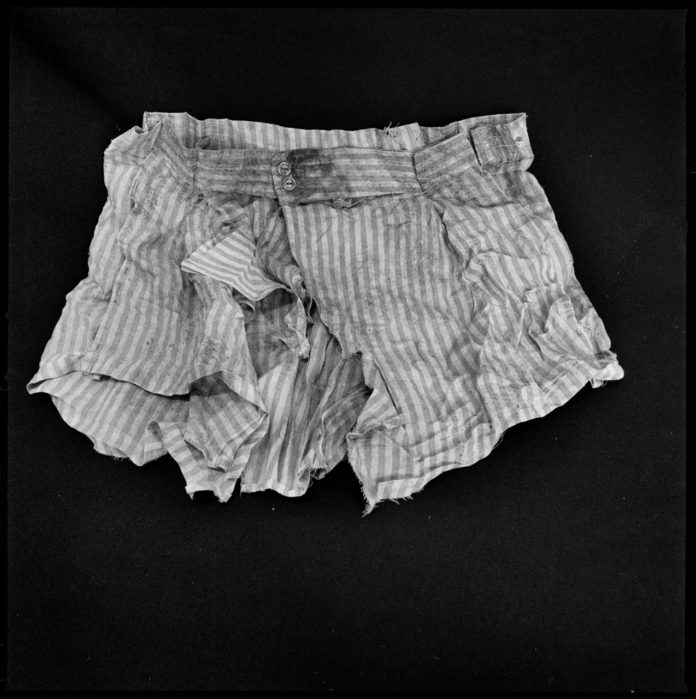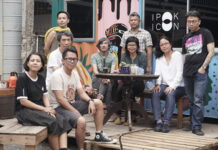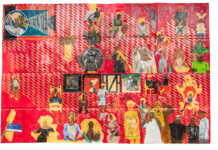
Whether in Portugal, his homeland, or in the various Latin American countries where he worked, photographer João Pina, 38, has devoted much of his 20 years of career to making “stories not fall into oblivion”. From the family inherited interest in politics – grandparents, communist militants, were political prisoners during the Salazarist regime. He also understood the importance of memory and knowing the past both to understand the present and to repair historical trauma and injustice.
No wonder, Por Teu Livre Pensamento, his first authorial work, was a sort of reckoning with his own history, from records of survivors of political persecution in Portugal. Condor, a project that took nine years to complete and resulted in a book and series of exhibitions around the world, investigated Operation Condor, articulation between six South American military dictatorships (Argentina, Bolivia, Brazil, Chile, Paraguay and Uruguay) organized to suppress leftist opposition.
Other projects came in Portugal, Cuba, Colombia (on the FARC), Rio de Janeiro (46750, which includes the number of homicides in the city between 2007 and 2016), among others. Currently, the photographer develops a work on Tarrafal, a concentration camp created by the Portuguese government in Cape Verde in the 1930s, and begins to address the slave heritage in Portugal. Unfortunately, according to Pina, looking into the past is still a little done work both in Brazil and in her country – although there discussions about colonialism and dictatorship begin to become more present.
In the Brazilian case, most worrying for the photographer, the result is, among others, the election of a president, Jair Bolsonaro, who praises “a torturer who should have been arrested for crimes against humanity”. Moreover, in the case of Rio de Janeiro, “I have no doubt that the fact that the military police kill on average 1,000 people a year has to do with this culture that comes from the dictatorship”, he says.
In each project, from long research and investigation, Pina builds narratives about open or hidden stories, present or past. The violence that appears explicitly in the current scenes of police actions in Rio appears otherwise silent in an empty room that was used for torture sessions in Argentina or on the faces of torture survivors in South American countries.
With an increasing role outside photojournalism, where she began her career, Pina has exhibited, over the years, in museums and galleries, and has published three books. “It’s completely out of my control and I don’t care how the market or academia classifies my work – whether it’s documentary, artistic, journalistic photography. What interests me is storytelling. I can only classify myself as an author who has a voice and things to say”. Read the full interview below:
ARTE!Brasileiros – Many of your projects deal with events of a time you did not live. How to use photography, which captures the present moment, to address these past facts. I mean, what devices did you use and use?
João Pina – Some devices of which I am aware and others not. The work goes through investigation, listening to primary sources to reach clues, places, people and objects, so to speak. I think it has to do with it, studying, researching, interviewing and then understanding how you can tell stories from a visual standpoint. So I will follow the clues of this visualization of the past in the present. And from that I create.
There always seems to be a desire to make public those often forgotten erased stories. Does it make sense to think like that?
Yes, I think this is my mission, to be able to broaden these voices and make these stories not fall into oblivion. This is my major concern, especially at this point in time, when it seems that we are rewriting and reinterpreting history according to who is in government. That to me is very scary.
In 2016, while Dilma Rousseff’s impeachment process was still under way, you said that the fact that Brazil had not discussed its past – and that the Armed Forces and some politicians continued to apologize for the coup – was very worrying because it was sowing the ground so that abuse could happen again. One such politician, Jair Bolsonaro, was elected president. How do you see this moment?
This process of not looking at memory in Brazil is very similar to what happens in Portugal, so it is not strange to me. But I look more concerned at the Brazilian case because I feel that the institutions in Portugal are a little more solid or at least there is less political instrumentalization of the institutions at this time. And this oblivion in Brazil, coupled with other problems of populism – which proposes easy recipes for deep problems – has given us what we are seeing with the election of the Bolsonaro, with a huge polarization and an exponential increase in violence that was thought to be resolved.
Violences inherited from dictatorship?
Because things cannot be resolved by osmosis on their own, they have to be spoken, stirred, remedied, and only then can a process be terminated. In Brazil, as in Portugal, where this resolution process did not exist, many people thought this would be resolved. But the fact is that Brazil continues to have barracks named after the dictators and that we had a deputy, now president, dedicating his impeachment vote to a torturer who should have been arrested for crimes against humanity. And a good part of the population thinks this is normal. So as long as these conditions objectively exist, it is normal for this kind of outcome to happen. The consequences are what we are seeing.
With the amnesty came this idea that one had to forget to move on. Do you really have to remember to move on?
It’s hard to give a recipe. I have read books including the right to forget, not just the right to remember. But I definitely think that ignoring the problem is not a recipe. History must be remembered to understand how things got where they came. And in Brazil this exercise is very little done. This exercise has never been done within the Armed Forces, which continue to argue that there was a liberating revolution that saved Brazil from communism, this bogeyman that eats little children. On the other hand, much of the left has not evolved its speech either. We must not forget that the Workers Party (PT) has been in power for 12 years and has done very little to discuss these issues. There was a National Truth Commission, but what followed it in practice was absolutely nothing. And with the current political landscape, then, it will be less than nothing, the setback, the rewriting of history.
This speech by a government that comes to save the country from communism, from 1964, is very similar to the one that elected Bolsonaro…
Just like in 1964, when it was said that everything was communism. That is, whoever says that everything is communism does not even know what communism is. Communism, fascism, are words that entered the distorted lexicon. Even the left makes this mistake when accusing anyone of fascist. Sometimes it calls fascists people who are neoliberal, which is completely different. But finally, it is a long discussion, which has to do with the lack of political and civic education. We have to think how to overcome this. Brazil suffers greatly from the lack of formal education, so to speak, and history becomes more manipulable. And if many Brazilians, even at school, do not really learn what happened in 1964, in 1968, in the Araguaia Guerrilla, etc., this is worrying.
And in the other South American countries you researched, is the picture very different?
The situations are different. Argentina is a country where these issues are very present, because soon after the dictatorship civil society mobilized a lot – and the victims were also many. So this became the order of the day and there were political conditions for the discussion to proceed. In some ways, it is an exemplary case. I think it would be unthinkable in Argentina for a figure to adopt a speech like Bolsonaro’s about dictatorship and to have such popularity and prominence.
Finally, moving to the 46750 project on violence in Rio de Janeiro, there seems to be a strong dialogue – perhaps not so explicit – with what one sees in Condor, as police violence in Brazil is still a direct remnant of repressive violence of dictatorship. Does it make sense?
It makes perfect sense. I started Condor in 2005 and 46750 in 2007, at a time when I was very focused on understanding these processes of violence, not only from the past but from the present. And very quickly for me this present violence began to show its nuances coming from behind. And in the case of Rio, I have no doubt that the fact that the military police kill on average a thousand people a year has to do with this culture that comes from the dictatorship. In fact, what you see there is also a result of the impunity implemented by the Portuguese when they arrived in Brazil, slavery, and after the military dictatorship. The fact that the Brazilian police is a military police, the one that dies the most and kills the world, does not come from yesterday, but from 500 years.
There is a much present discussion in the artistic universe today about how visual arts can also be a potent device for dealing with history. How do you see this question?
I think that even in academia today there is a growing concern to treat things also outside the text, using visual language for that. And I realized that with Condor. In using images to address this subject, I quickly began to be contacted by teachers and academics, and to be called to lecture on the subject. I think he began to understand better, 200 years after the emergence of photography, the power of visual and the contributions he can make even to the academy, whether in a documentary approach or more artistic, poetic, freer.
Do you believe that art, and more specifically photography, can have some restorative virtue? I mean, for victims of violence as well as for society, can jobs like this that you do have a healing role, too?
I don’t know, maybe it’s too pretentious or utopian to think this way. I don’t think an image itself will heal, heal, or give justice to anyone. But I think that it can contribute, like text, painting and music, to some kind of justice, reparation and better welfare for the victims. And, also, more uneasiness for the guilty, that when they see themselves portrayed they may be able to rethink what their actions were, to realize the consequences of what they did.








